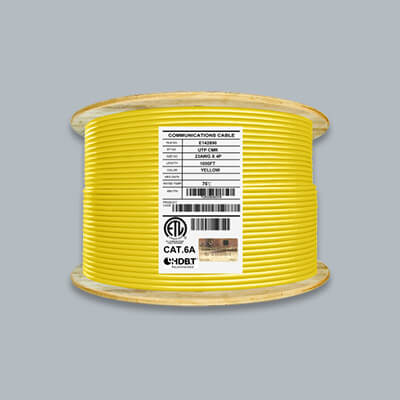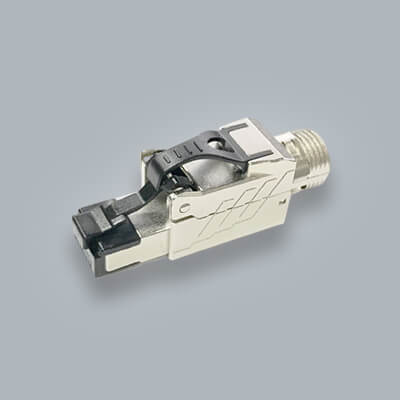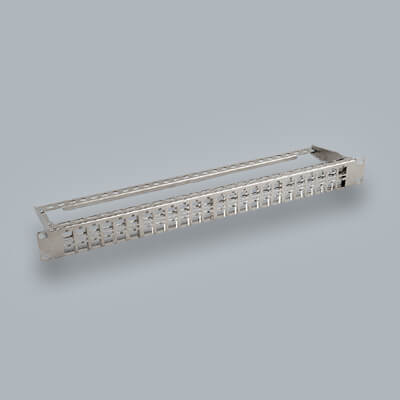24AWG vs 26AWG vs 28AWG

AWG sizes play an an important roll in the performance of your ethernet cable. Let us help you sort through the various AWG sizes for a better understanding of what you can expect from your cable. In this article we will go over 3 of the most popular AWG sizes in the market today. They are 24AWG vs 26AWG vs 28AWG.
These cables are common in Cat5e, Cat6 and Cat6A cables. They help determine the size and electrical performance of your cables.
How Does AWG Affect Performance?
To begin with this article it's important to grasp the concept of what exactly a AWG (American Wire Gauge) is? You can learn more about that in depth here: AWG: What is it?
To quickly go over that, the AWG sizes and cable size have an inverse relation to each other. The higher the AWG size number the thinner the cable will be. So a 28AWG cable will be thinner than a 24AWG cable.
When we talk about the AWG of the cable we are actually referring to the conductors (wires) inside the cables. The thickness and diameter of cable conductors determine the cables AWG size. Larger gauge numbered cables will have thinner wires in them. Because of this attribute these types of cables are often stranded cable. This makes them more flexible, great for short runs and can be made in to patch cables.
Smaller gauge numbered cables are often solid cables which will be composed of thicker conductors inside them. The more copper used in these cables make them better for longer distance runs. You'll often find smaller gauge numbered cables have jacket types such as riser, outdoor and plenum. These cables have certain fire retardant materials making them suitable for each location.
Now that we have an introduction to AWG sizes let's get in to the differences between 24AWG, 26AWG and 28AWG.
24AWG

24AWG cables are going to be the largest in size compared to 26AWG and 28AWG. The majority of cable you find with this AWG size is going to be solid core cable. This makes them great for longer distances. The maximum distance you can run Cat5e, Cat6 and Cat6A cable is up to 328 feet (100 meters). However within this 328 feet some cables are better at performing over longer distances and solid conductor cables are one of them.
Not only will you find solid 24AWG cables but you will also find stranded 24AWG cables. So at this size you really have multiple options for short and longer length cable runs.
If you're deciding on 24AWG cables these will give you better performance over long distances and also give you great performance at shorter distances. This is because 24AWG cables use more copper than 26AWG and 28AWG cables.
To visualize this you can see solid 24AWG cable ran up to 328 feet:

The test above is an insertion loss test of 24AWG solid cable up to 328 feet. Insertion loss is when signals start to decline with the insertion of a device in transmission from point A to B. The blue line shows the passing line for the test. For the insertion loss test you want the results to be above the line which shows you in this that 24AWG solid cable is able to pass the test.
26AWG

26AWG cable is another popular cable size in the market. This AWG size of cable is often found in stranded cables. They come with a little more copper than 28AWG cables and a little less than 24AWG cables. This make this cable a great choice for short cable runs. You'll often want to use this cable for creating patch cables in your home or business. Another popular use of 26AWG cables is that they can also come shielded and stranded together.
For example you can take a look at our bulk 26AWG Cat6A Shielded stranded cable or Cat6A patch cables.
This 26AWG cable has stranded conductors and also foil wrapped around each individual pair. The shielding helps in protecting your cable from EMI.
28AWG

The cable that is becoming more and more popular is 28AWG cables. This is because of the smaller wires inside this type of cable making them a lot thinner than your standard size ethernet cables. You'll often find this cable having stranded conductors. When you line 24AWG vs 28AWG up against each other you can clearly see the size difference.

With the wires being so thin this makes this cable also great for shorter runs. These cables tend to be one of the most flexible cables in the market which is important for patch panels and networking enclosure installations.
The thing you want to keep in mind with 28AWG is that because of the smaller size of the cable less copper is used in construction. So at longer distances performance will not be as good as 24AWG and even 26AWG.
The TIA568.2-D standard even states that the maximum length of 28AWG cables can not exceed 49.2ft (15 meters). So if you're going to go with this cable try to keep your cable runs on the short side.
Here's another test reflecting the insertion loss of 28AWG cables at 328 feet:

Just like the first test done you want the results to be above the blue passing line. In this test stranded 28AWG cables are run up to 328 feet and are not able to pass the insertion loss test.
Things To Know
Other things you should keep in mind when selecting your cables is the location in where they are going. Choosing the right AWG size cable can certainly help with overall performance but you want to keep in mind environment and location. The majority of installs will come down to choosing solid or stranded cables in which 24AWG, 26AWG or 28AWG might be used.
If you're running inside walls then you will want to use riser rated cable. This cable is going to be have solid core conductors. Most of these options will be 22AWG, 23AWG and 24AWG options.
For shorter open air runs from one side of the room to the other, patch panels and inside networking enclosures you will want to use stranded cables. Stranded 24AWG, 26AWG or 28AWG cables can be used for this scenario and they will typically be CM rated.
Final Thoughts
All 3 of these cables choices serve a certain function. 24AWG cable is the most versatile out of these because it will be constructed with more copper making it better for longer distances. You also won't encounter as much cross talk or insertion loss at longer distances with this cable.
26AWG cables are a great choice for shorter runs and making patch cables out of it. 26AWG is typically going to be shielded which helps if you are installing in areas with EMI.
28AWG is the most flexible compared to 24AWG and 26AWG. It's going to have the smallest conductors between these 3 and should ideally be used for areas where you want to save space or installing in to patch panels. At longer distance this cable will have more attenuation and increased insertion loss.
Let us know if you have any questions regarding these 3 AWG sizes! We're here to help.
Happy Cabling !






The distance between my AVR Denon X-2000 and Wharfedale Sub-woofer is 18 metres.
Amplifier power: 150 W
Line input sensitivity: 200mv for 75 W
Average Max output at 1 metre: 110 db
Boundary response: 35 – 110 Hz
Cross over range: 35 – 85 Hz (6 × 10 db steps)
Can I use a 2 core wire (PRO-KAB High grade professional Low Noise Dual track Microphone cable 19/40 × 2 core (24 AWG)
Please advise.
- – JAYANT
Can either of these cables be used together, or connected together with an adapter of some kind, in order to reach further?